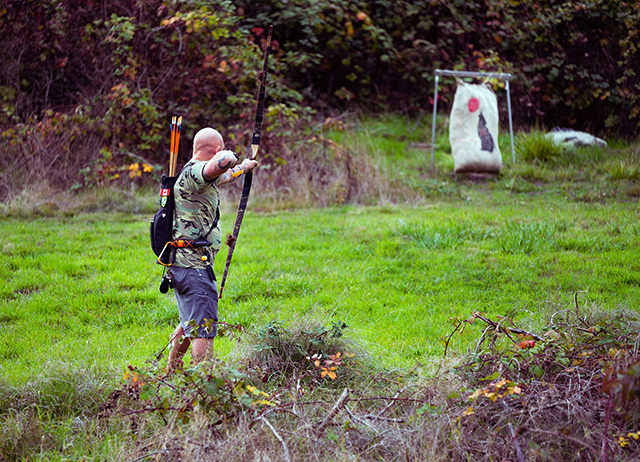Bow hunting is a primal game hunting skill that many hunters love. Successfully stalking wild animals plays an important role in successful hunting. This is why bow hunting rangefinders come in handy, whether you are on flat ground or steep terrain.
Rangefinders are widely used to get an accurate measure of the target range, plus they can provide a clear view at long-distances. This also helps you understand where your arrow is going to hit. In this way, rangefinders play an important role in making successful shots. Therefore, every bow hunter should carry this piece of equipment as part of their archery accessory kit.
 bow hunting equipment
bow hunting equipment Here are some key reasons why you need a rangefinder for bow hunting.
Accurate Ranging Rather than Guesswork
The most important feature that a rangefinder provides is distance measurement between you and the target. By just pressing a button, a laser beam will be sent toward the target and get reflected back to you. The internal laser technology calculates the distance instantly.
This device helps you making clear shots and eliminates the guesswork. You can easily distinguish the best animal to hunt from a group, and by hitting your target accurately you will more likely kill the animal humanely without giving them unnecessary pain.
Make The Target Closer
Many laser rangefinders can calculate the distance to the target from within a yard or two up to a mile or even more. Typically, you need long-range rangefinders featuring more than a mile ranging capacity for big game hunting.
In most cases, rangefinders that range up to 400 to 500 yards are adequate for bow hunting in flat terrain. Most importantly, get a rangefinder that can at least estimate distances over 20 yards to 100 yards.
A good rangefinder will help you get a closer look at the prey. There are also zoom in and out options that assist you in getting a magnified view of the target.
Good to Prep the Hunt
Knowing the hot spots is not sufficient, you have to prepare a bit before hunting. Luckily, the rangefinder will help you in this case. Before hunting, it's important to scout out the region and spot the area with a decoy or something similar. Then measure the distance between the hunting blind (tree stand) and the decoy.
If you plan to hunt by foot, mark out a good zone and measure the distance as before. This will help you out even in the dark. In this way, you can reduce some real-time stresses and do successful hunting.
Horizontal and Angle Distance
This feature is important for avid bow hunters. There are differences between straight-line and vertical-line ranges. It's a key consideration when bow hunters shoot from an elevated stand or in steep terrain.
When you activate the straight-line mode and shoot the target standing in a steep downhill, this may give a high hit. To deal with the issue, optics manufacturers addressed vertical-line ranging mode.
Avoiding Unexpected Situations
While hunting in the wilderness, unexpected scenarios may arise, like a hunting deer may come suddenly in front of you, and you don't have time to pull out the rangefinder and bow. The rangefinder helps you in such a situation, to track game animal before it reaches to you.
By practising ranging frequently, you can avoid such situations. Wait and see with the rangefinder until the game comes within your limit. If you want to let a wounded or cub deer go, you can also do that while you have a rangefinder in hand. Scanning your surrounding continuously, you can also save yourself from other wildlife.
Locate Hidden Prey Fast
New rangefinders make it possible to determine whether the laser beam hits the target or anything else. This tells if there is some obstruction in the way. The long-range models provide the furthest distance, bypassing the tree branches or similar. Using rangefinders, you can easily identify hidden animals within seconds.
Related Pages
- Article on Choosing the Right Archery Stabilizer
- Discussion about the different types of Archery Accessories
- Rangefinders for Golf — to measure the distance between a golfer and a target on the course.
- Other Archery Equipment


 Current Events
Current Events